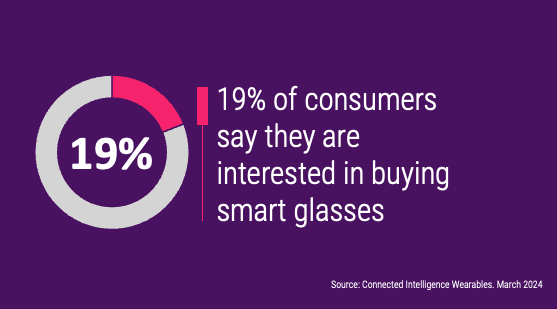
Google IO brings WEAR improvements …
Last week was Google’s IO event and the key takeaway for Wear OS is that the next major update (OS 5) will be less power hungry. Google says that Wear OS 5 will consumer 20 percent less power if the wearer is running a marathon and obviously that power efficiency will apply to a range of use cases. But the battery life preservation seems to be more focused building more efficient apps. To that end, Google is providing developers with a new guide on how to build more efficient apps that conserve battery. What that means, of course, is that simply updating your watch to Wear OS 5 may not have a significant impact on battery life. Rather, it will depend on when the app developers embrace the changes.
Google also launched more Watch Face Format features which will allow developers to create a wider range of watch faces that include a broader range of information.
The Circana Take:
- The Watch Face Format feature expansion is a bigger deal than it sounds. The ability to customize the core glanceable interface can significantly enhance the usability of the watch. This is not just for niche applications, but also means that more kid-focused interfaces can be designed which will hopefully help drive more demand among younger audiences – a key market that Wear-based smartwatches has not been too successful in.
- Battery life is king… to an extent. Any smartwatch worth strapping on your wrist should be good for 24 hours – and have a fast charge rate. However, as we start to see more smart rings enter the market, expect smartwatch OEMs to promote a bundle of watch (for the day) and ring (for sleep tracking) which is why we only expect a 24 hour battery life. Of course, that 24 hours can be intensive: Google’s example of a marathon is important as it is a battery-intensive use case due to the GPS tracking.
…and a tease
While the media – and OEMs – are getting excited about smart rings, Google teased a new version of its smart glasses. It was only a brief glimpse, with no true product announcement, but they definitely sent the message that Google has not given up on smart glasses. Nor should it: while the company has had an on/off relationship with the technology (the original Google glass, buying North, and the whole promise of Project Iris ) this is a category that will ultimately be successful. And right now Meta has the space pretty much to itself with its Ray-Bans partnership.
The Circana Take:
- We’ve said it before, but it is worth repeating: AI + smart-glasses starts to take the category in a new, and far more interesting direction. The glasses can understand their surroundings and the context of what you are doing. That, combined with a strong voice interface (and yes, a small internal scree) makes for next generation augmented reality and a new mobile device that could ultimately shake the dominance of the smartphone (caveat: we are obviously not talking about any major upheaval in the short term!)